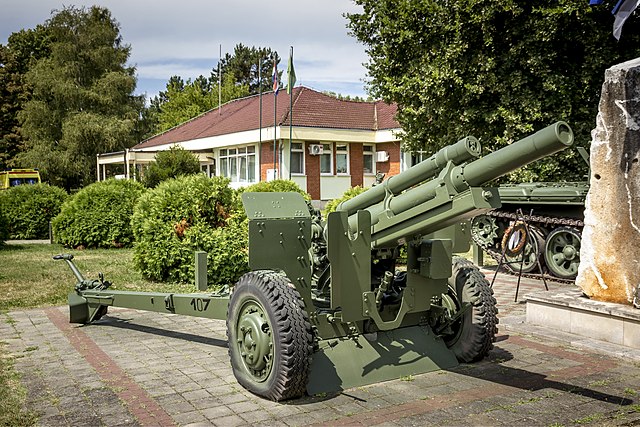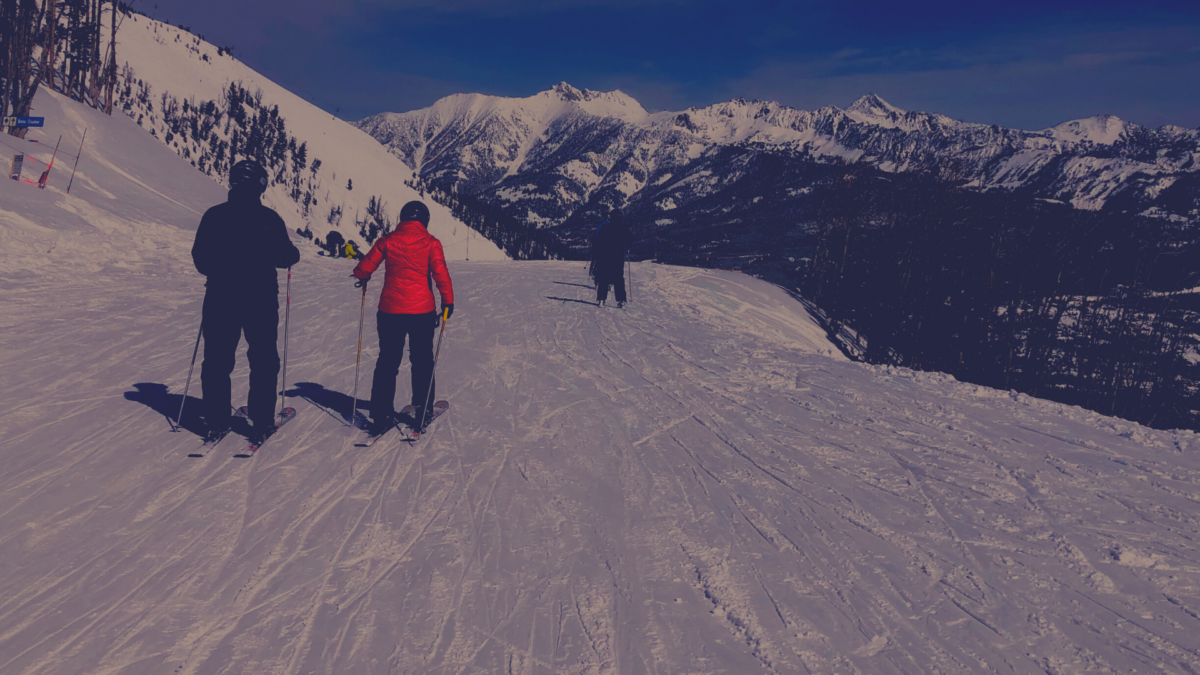
Avalanches have been affecting humans ever since they began building, living, and traveling across snowy mountain tops. About 150 people worldwide die each year, according to the National Geographic, from these tremendous natural events that consist of entire hillsides of snow flowing down a mountain.
But since snow sports became a popular activity in the mid-twentieth century, avalanches have posed an especially increased risk as more and more people attempt to find leisure in skiing or snowboarding in avalanche prone areas. The risk extends beyond just those who ski and snowboard: avalanches can demolish roads, buildings, lodges and other critical infrastructure built near and on snowy mountain sides.
Although humans have attempted to control avalanches since the 1300s — Swiss alpinists discovered that old-growth trees could prevent snow from sliding — the systems of avalanche mitigation used across the world to keep skiers and snowboarders safe was completely revolutionized in the after the Second World War. Today, snow-rangers and ski resorts primarily use controlled explosives to activate avalanches before they can pose a risk to any skiers. This strategy has proved successful over the years: at modern resorts, skiers are highly unlikely to encounter any kind of avalanche and the largest risk comes from those who ski in the backcountry where slopes have not been cleared by bombs.
The advent of explosives for avalanche control can be traced back to the experiments by employees of the Forest Service Snow Ranger program in the mid-twentieth century. These rangers, working in the Alta Ski Area of Little Cottonwood Canyon about 30 minutes from Salt Lake City, built “one of the most effective and innovative avalanche control and forecasting programs in the world,” according to Doug Abromeit of the U.S. Forest Service National Avalanche Center. The military background of one ranger, Monty Atwater, who would go on to become a father of the field of avalanche sciences, was crucial in the development of explosive techniques for avalanche control.
In 1938, the U.S. Forest Service began to issue ski area permits for recreational skiing in national forests, and the Alta Ski Area became one of the first to receive a permit. The Ski Area is located next to the small town of Alta, established in the late 1800s after several mining camps opened at the top of Little Cottonwood Canyon, according to Jim Steenburgh, professor atmospheric science at the University of Utah.

The Forest Service quickly realized after opening the Ski Area that the canyon was at an extremely high risk of avalanches. Steenburgh writes in his book “Secrets of the Greatest Snow on Earth” that the winding road through the canyon leading to Alta lays in the path of 50 different avalanche paths which release an average of 33 avalanches per year. “The combination of frequent avalanches and heavy traffic leads to the highest avalanche hazard of any highway in the United States,” he writes. Seven major avalanche paths lay above the town of Alta.
As a result of the heightened danger, the Forest Service hired its first Snow Ranger, Douglass Wadsworth to oversee mitigation efforts and methods to reduce risk. Wadsworth helped develop a set of rules for minimizing risk of facing an avalanche in the canyon, which included keeping out of the canyon all together for a few days after large storms and especially staying off of steep slopes that do not have many large trees.
Wadsworth’s rules provided some of the first guidance in the nation surrounding safety precautions for avalanches, but such rules essentially required mitigation by not skiing or engaging in snow sports all together. Considering the tendencies and temptations of the modern skier, these rules alone are not sufficient to prevent avalanche deaths and injuries.
Many modern skiers are also particularly attracted to skiing on completely untouched, deep, powdery snow. Skiing through such terrain, especially in the backcountry outside of a resort’s territory, can be quite dangerous.
So, how could the Forest Service actively mitigate the risks of sliding snow? Wadsworth and his team became the first group in North America to use explosives in an attempt to trigger an avalanche, according to Abromeit in his article detailing the history of artillery use for avalanche control. The idea behind intentionally causing an avalanche is that a mountainside prone to releasing a snow slide could be triggered in a controlled environment when skiers, equipment, and vehicles have been cleared out of the way. After the avalanche has been released, the snow will eventually set and restabilize.
When Wadsworth and his team detonated dynamite in an avalanche prone slope on Mount Superior, the explosion failed to trigger the avalanche. But the next day, a snow slide naturally released on the mountain, demolishing the group of trees that he and his team were hiding in when they set off the explosion the day before.
Wadsworth continued to experiment with explosives, but a turning point in the method of artificial avalanche releases came when the Forest Service hired a U.S. Army veteran in 1946. Montgomery Atwater served during the Second World War with the 10th Mountain Division, a newly created unit based in Colorado that specialized in combat in highly mountainous and snowy terrain.
Atwater’s academic background was in English Literature, graduating with a degree from Harvard University, but it was with the 10th Mountain Division that Atwater became an expert skier and outdoorsman while learning about explosives as well. He was deployed to fight in northern Europe and at the Battle of Kiska on the islands of Alaska’s archipelago, according to the U.S. Ski and Snowboard Hall of Fame.
In his time with the 10th Mountain Division, which originally trained at Camp Hale in Colorado, Atwater had seen how artillery had been used to trigger avalanches. When he first arrived at Alta, he had few resources for avalanche control, mainly working off of the non-interventionary rules developed by Wadsworth. That would change quickly.
Atwater continued to work on using explosives to set off snow slides and eventually came to the conclusion that using military artillery would be the most cost-effective and least dangerous method for triggering avalanches. If the target slope was far away, launching an artillery round into the snow from a distance would prove to be much more safe than having to find a way to place an explosive on or near the snow. For slopes that were “mid-range targets, too close for artillery but too distant for hiking and skiing,” Atwater used a variety of methods including rifle grenades and bazookas, according to writer James Somers.
Ultimately, Atwater decided on using a 75mm French Howitzer for initial testing and on March 30, 1949, Atwater and Forest Service Supervisor Felix Koziol oversaw the launching of 15 rounds of artillery into avalanche paths in Little Cottonwood Canyon. The bombing proved successful. Like Wadsworth, the Atwater’s use of artillery weapons for avalanche purposes was a first in North America.

Atwater had previously experimented with detonating explosives hanging from trees, resulting in a shockwave, or an air concussion, that he hoped could trigger an avalanche. He gave up on this method after one try, according to Abromeit. However, decades later, air cannons would become a highly effective and safe method for creating explosions.
Atwater’s ability to use artillery equipment for avalanche control was the result of both his specialized military experience and training that saw warfare in the mountains, and the emergence of the military industrial complex after the Second World War. The 75 mm French Howitzer was an out-of-date weapon, primarily used in the First World War, allowing the National Forest Service to purchase it at an inexpensive price. But Atwater and his team continued to experiment with various artillery, according to Abromeit, and as a result of the U.S. Army upgrading its weapons in the 1950s, could continue cheaply purchasing the artillery and rounds that were now designated as surplus weapons. The Forest Service formed an agreement with the U.S. Army to purchase 75 mm and 105 mm Recoilless Rifles at a low price for the express purpose of use in permitted ski areas, according to Abromeit.
By the late 1950s, Atwater realized that it would not be long before he and his team would need to adjust. The military was no longer producing rounds for the out-of-date weapons they were using. With the engineer Frank Parsoneault, Atwater helped develop the “Avalauncher,” a device based on a baseball pitching machine that would shoot projectiles about 400 yards, according to Tyler Cohen of Backcountry Magazine. This machine was far less accurate than an artillery weapon, but Atwater and Parsoneault sold many Avalaunchers which are still in use today.
Atwater initially ran into an unprecedented legal problem. The Forest Service determined that the artillery should not be handled by civilians and that only the Utah National Guard could launch the rounds. But the nature of the natural disasters he was trying to prevent meant that when storms blanketed the canyon, creating avalanche prone slopes, the national guardsman, based in Salt Lake City, were unable to travel up the canyon where Atwater was already stationed. He began launching the artillery himself after which he initially received punishment from his superiors at the Forest Service. However, the rule was eventually altered to allow civilians to legally fire the artillery.
Today, snow science researchers have a much better understanding of why avalanches occur, thanks in large part to early experimenting by Atwater and Wadsworth at Alta. Avalanche risk is the result of unstable layers of snow that build up on a slope that is not too steep that the snow falls off quickly and not too shallow that the snow remains stable; 39 degrees is the ideal angle for avalanches, according to Somers.
In Little Cottonwood Canyon, home of the Alta Ski Resort and Snowbird Ski Resort, avalanche control is overseen by a variety of organizations including the Utah Department of Transportation, the U.S. Forest Service and the Unified Police Department of Greater Salt Lake, according to Steenburgh. Today, 105 mm howitzers operate at Alta and Snowbird and launch about 600 rounds per year.
The successful avalanche control systems we have today, that keep countless skiers safe, could have only been developed by Monty Atwater. In the post World War II era, skiing was becoming a popular snow sport and the demand for reducing the risk of dangerous sliding snow was high. At the same time, military artillery was in surplus. Atwater, whose background included both skiing and knowledge of explosives, successfully connected to the two and pioneered the most effective method we have for preventing deadly avalanches.
Bibliography
Abromeit, Doug. United States Military Artillery For Avalanche Control Program: A Brief History in Time. USDA Forest Service National Avalanche Center, https://arc.lib.montana.edu/snow-science/objects/issw-2004-611-619.pdf.
“Bootprints in History: Mountaineers Take the Ridge.” www.Army.Mil, https://www.army.mil/article/143088/bootprints_in_history_mountaineers_take_the_ridge.
Cohen, Tyler. “Montgomery Atwater: Father of U.S. Avalanche Work.” Backcountry Magazine, 24 April 2019. https://backcountrymagazine.com/stories/montgomery-atwater-father-of-u-s-avalanche-work/
Howard, Jenny. “Avalanches, explained.” National Geographic, 19 July 2019. https://www.nationalgeographic.com/environment/article/avalanches
Somers, James. “Snow Science Against the Avalanche.” The New Yorker, 23 Mar. 2020. https://www.newyorker.com/magazine/2020/03/23/snow-science-against-the-avalanche
Steenburgh, Jim. “Alta Goes to War” In Secrets of the Greatest Snow on Earth: Weather, Climate Change, and Finding Deep Powder in Utah’s Wasatch Mountains and around the World, 92-109. Boulder, Colorado: University Press of Colorado, 2014. http://www.jstor.org/stable/j.ctt7zwdms.10.
